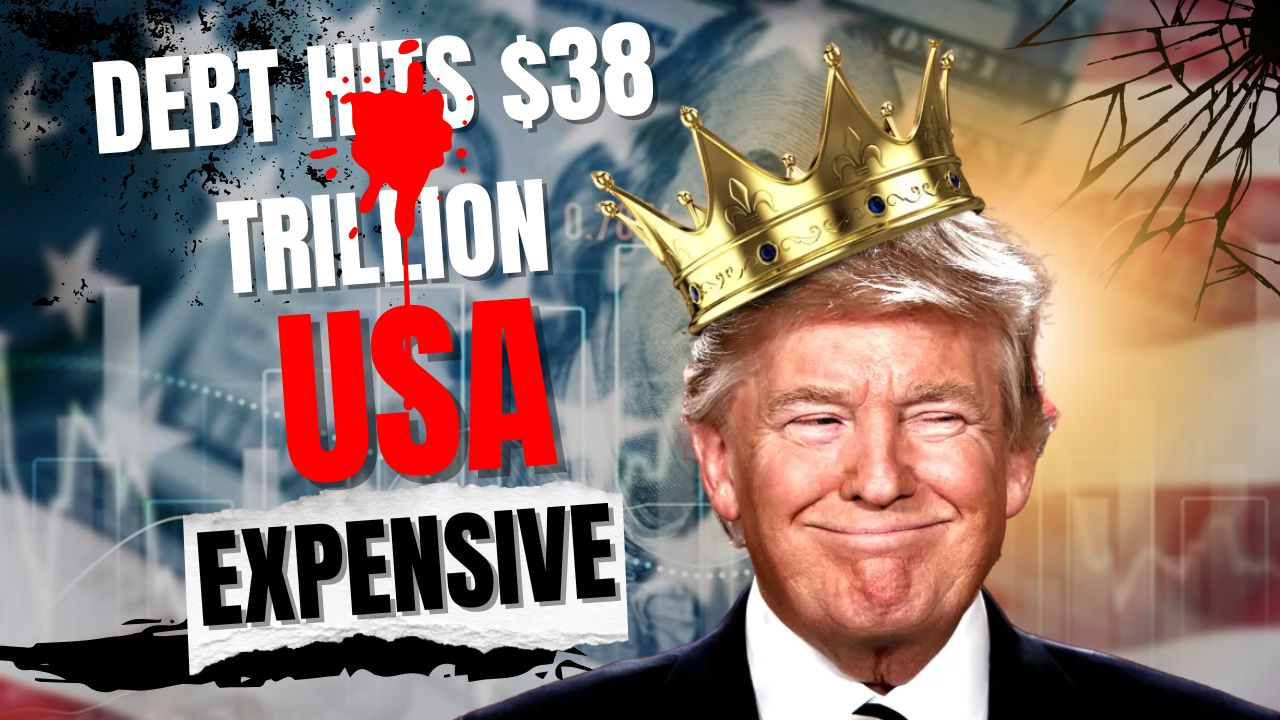Here’s something jaw-dropping: the U.S. national debt just crossed $38 trillion — and it only took two months to grow by another trillion.
It’s the fastest increase in federal borrowing since the pandemic, and many Americans are asking the same question: What does this mean for me?
While $38 trillion sounds abstract, it’s a number that quietly shapes everything from mortgage rates to retirement savings — and even the stability of the global economy.
U.S. national debt just crossed $38 trillion
Think about it this way: America’s debt works like a massive credit card. Every year, the government spends more than it earns, and the difference gets added to the balance.
The U.S. has carried debt since its founding, but borrowing accelerated after major crises — from the 2008 financial meltdown to the COVID-19 pandemic, which alone added over $5 trillion in new debt.
Today, the country owes more than its entire annual economic output, with a debt-to-GDP ratio of 123% — the highest in peacetime history.
Rising Interest Rates Make It Worse
Here’s the catch: debt isn’t just about how much we owe — it’s about how much it costs to keep that debt alive.
With the Federal Reserve holding interest rates above 5%, the government’s interest bill has skyrocketed. In 2025 alone, the U.S. is projected to pay $1.2 trillion in interest — more than it spends on defense or Medicaid.
As former Treasury official Mark Willis put it, “The problem isn’t just the debt — it’s the price of carrying it.”
What It Means for Ordinary Americans
If you think this is just a Washington problem, think again. When the government borrows heavily, it pushes up long-term interest rates — and that ripples across everyday life.
- Mortgages and car loans become more expensive.
- Business borrowing slows, hurting job creation.
- And when the government spends more on debt interest, there’s less left for public priorities like healthcare, education, and infrastructure.
Economist Laura Price explains it bluntly: “Every extra dollar spent on debt interest is a dollar that doesn’t build roads, fund schools, or strengthen climate resilience.”
Can the U.S. Fix It?
Experts agree there’s still time — but not much. Options range from raising revenue through smarter tax policies to reforming entitlement programs like Social Security and Medicare.
The real challenge is political gridlock. Both parties agree the numbers are unsustainable but disagree on solutions. As one Treasury official admitted, “The longer we wait, the fewer choices we’ll have.”
Why This Moment Matters
Debt crises don’t happen overnight. They build slowly, then suddenly. And while America still enjoys the “privilege” of borrowing in the world’s reserve currency, that trust isn’t limitless.
If rates stay high and deficits remain unchecked, the U.S. could face the toughest fiscal choices in a generation — choices that will affect every American household.
Frequently Asked Questions
1. Why does the U.S. debt grow so quickly?
Because spending keeps outpacing revenue. Programs like Social Security and Medicare expand automatically as the population ages, while tax receipts haven’t kept up.
2. Does high national debt affect inflation?
Yes. Persistent borrowing can fuel inflation over time, especially when the economy is near full capacity.
3. Is the U.S. at risk of default?
Not immediately. The U.S. borrows in its own currency and remains a global safe haven — but repeated debt-ceiling standoffs could test investor confidence.
